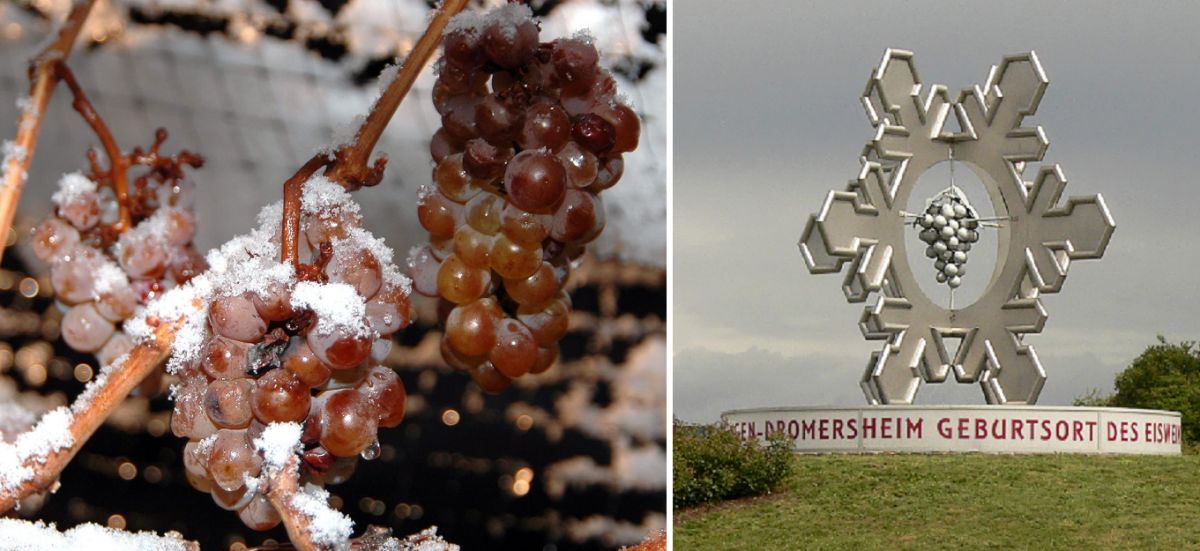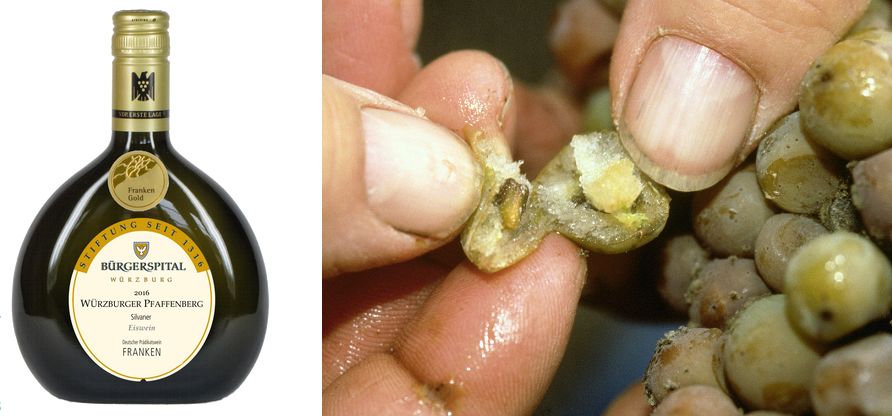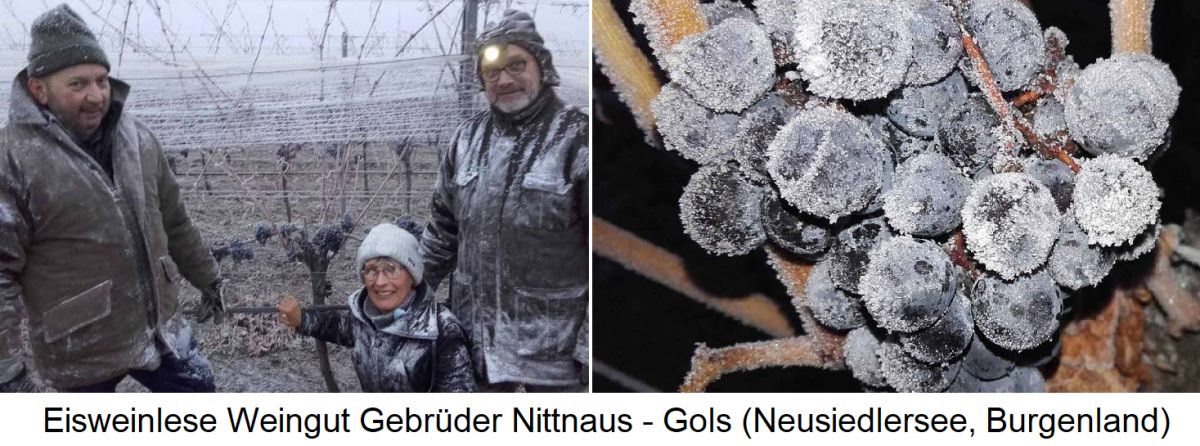Term for a special type of wine produced from frozen grapes. There must have already been an "ice wine" in ancient times, as the Roman poet Martial (40-102) reports on winegrowers who harvested frost-stiffened grapes in November. Also in the 1st century, the scholar Pliny the Elder (23-79) wrote about certain grape varieties: "They are not harvested until it has frozen". This points to the deliberate and not just accidental production of ice wine. Later, however, this type of harvesting and winemaking seemed to have been forgotten.

First ice wine
It is said that the production of ice wine was rediscovered in France towards the end of the 18th century. As with Trockenbeerenauslese, the phenomenon was not initially planned, but most likely occurred by chance when a very early frost surprised the wineries during the actual main harvest.
The first ice wine harvests in Germany are said to have taken place in Franconia in 1794. The first documented ice wine was harvested on 11 February 1830 from grapes from the 1829 vintage in Dromersheim near Bingen in the Rheinhessen wine-growing region. It was an extremely cold winter and some winegrowers had the idea of leaving the grapes hanging to feed the animals. When it was realised that the grapes contained very sweet must, they were pressed. An ice wine monument was even erected in Dromersheim for this purpose (see picture above right). However, only six years in total are documented in Germany in the 19th century in which ice wine could be produced. This was the 1829 vintage mentioned above, as well as the 1846, 1858 (at Schloss Johannisberg), 1875, 1880 and 1890 vintages.

Environmental conditions
Today, this is understood to be a sweet wine speciality of the northern wine-growing countries, because only in these latitudes do the necessary climatic conditions prevail. However, this only applies to those regions where relatively early and severe frosts occur. In Germany and Austria, such conditions do not occur every year, but they do occur from time to time. In both countries, icewine is a special type of wine within the Prädikat quality wine category. An excellent icewine culture also developed in Canada (Ontario) from the mid-1970s, which was initiated by the Austrian-born Dr Karl Kaiser (1941-2017) at the Inniskillin winery.
Production
Production is extremely complex and risky and cannot be planned. In addition, the harvest quantity is only a fraction of a conventional wine, which explains the relatively high prices. In Germany and Austria, the must weight must be at least equivalent to a Beerenauslese. However, ice wine can only be made from fully ripe grapes; if the grapes are frozen when unripe, then all the grape juice is frozen and no higher sugar concentrate can be pressed.
Frost is an absolute prerequisite for the grape harvest. The grapes, which should be as healthy as possible and generally not affected by botrytis, must be left on the vine until frost sets in. This is usually the case from November at the earliest, but can also be towards the end of January of the following year. The outside temperature must drop to at least minus 7 °Celsius or colder for at least five hours or, at best, longer. The sweet must with the extract substances has a lower freezing point than water. However, the extract substances in the berries prevent the water from freezing at 0 °Celsius. The lower the temperature, the better the water molecules freeze, allowing the pure must extract to be pressed. The ideal time for the grape harvest is usually early in the morning.
The grapes must then be pressed as quickly and completely as possible, i.e. without destemming. The concentrated grape juice with all the extract and sugar-rich ingredients is separated from the ice crystals from the frozen grapes. Only this concentrated must runs off, the ice (water) remains behind and is separated out with the marc.
This is checked on the spot by an official inspection body. The process is very slow and takes several hours, during which time the press cake must not thaw, or only slightly, for both legal and qualitative reasons (reduction in must weight). There are attempts to produce similar products by freeze concentration. In 2001, the European Union approved the protected designation Icewine for the European market, thus opening up the Canadian market to ice wines from Germany, Austria and other EU countries.

Further information
For information on the production of alcoholic beverages, see Champagne (sparkling wines), Distillation (distillates), Spirits (types), Winemaking (wines and wine types) and Wine law (wine law issues).
Grape frozen: By Dominic Rivard from Bangkok,
Thailand - icewine grapes, CC BY-SA 2.0, Link
Monument: By MSeses - Own work, CC BY-SA 3.0, Link
Bocksbeutel: Bürgerspital
Grape: © DWI (German Wine Institute)
Ice wine harvest: Nittnaus brothers
Voices of our members

There is a vast number of sources on the web where one can acquire knowledge about wine. But none has the scope, timeliness and accuracy of the information in the encyclopaedia at wein.plus. I use it regularly and rely on it.
Sigi Hiss
freier Autor und Weinberater (Fine, Vinum u.a.), Bad Krozingen